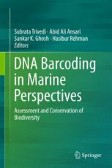Search
Search Results
-
Detecting kelp-forest associated metazoan biodiversity with eDNA metabarcoding
Environmental DNA (eDNA) metabarcoding is a promising tool for monitoring marine biodiversity, but remains underutilised in Africa. In this study, we...

-
Metabarcoding meiofauna biodiversity assessment in four beaches of Northern Colombia: effects of sampling protocols and primer choice
Environmental DNA (eDNA) metabarcoding can enhance understanding of global biodiversity by making it possible to study taxonomic groups that are...

-
Ultrastructure of cerebral eyes in Oweniidae and Chaetopteridae (Annelida) – implications for the evolution of eyes in Annelida
BackgroundRecent phylogenomic studies have revealed a robust, new hypothesis of annelid phylogeny. Most surprisingly, a few early branching lineages...

-
Species and genetic diversity relationships in benthic macroinvertebrate communities along a salinity gradient
BackgroundSpecies- and genetic diversity can change in parallel, resulting in a species-genetic diversity correlation (SGDC) and raising the question...

-
Wood Biodeterioration in Marine Environment
The biological processes a wood undergoes on exposure to use or otherwise in marine environment are comprehensively briefed up. Biofilm development...
-
Anterior sense organs in Sabellaria alveolata (Annelida, Sedentaria, Spionida) with special reference to ultrastructure of photoreceptor elements presumably involved in shadow reflex
The reef-building sedentary polychaete, Sabellaria alveolata , is well known for its specialized anterior end, the operculum, which is exposed to the...

-
Alien Invasive Aquatic Fauna: Challenges and Mitigation
In the recent past, the invasive species became a matter of great concern across the globe as they were introduced from one geographic area to the...
-
Benthic biocoenosis: influence of edaphic factors in the tropical mangroves of Cochin, Southern India
Biocoenosis of macrobenthic communities in relation to environmental and mangrove flora was studied in mangrove ecosystem of Cochin backwaters during...

-
Brooding strategy of the Arctic cold seep polychaete Oligobrachia haakonmosbiensis
The Arctic polychaete, Oligobrachia haakonmosbiensis (Family Siboglinidae), is the most abundant symbiotic species inhabiting the Haakon Mosby Mud...

-
Molecular characterization and phylogenetics of Indian polychaete fauna: scope for implementation in ecological monitoring
DNA barcodes are increasingly applied to ascertain the taxonomic identification to improve the speed and accuracy of ecological monitoring...

-
Sponges in shallow tropical and temperate reefs are important habitats for marine invertebrate biodiversity
Habitat availability underpins the diversity and distribution of benthic marine communities. Sponges are significant structural components of...

-
Ultrastructure and functional morphology of the appendages in the reef-building sedentary polychaete Sabellaria alveolata (Annelida, Sedentaria, Sabellida)
BackgroundThe sedentary polychaete Sabellaria alveolata , the sandcastle or honeycomb worm, possesses four different kinds of appendages besides the...

-
Spatial and temporal dynamics of Antarctic shallow soft-bottom benthic communities: ecological drivers under climate change
BackgroundMarine soft sediments are some of the most widespread habitats in the ocean, playing a vital role in global carbon cycling, but are amongst...

-
Distribution of meiofaunal abundances in a marine cave complex with secondary openings and freshwater filtrations
Submerged sea caves are priority areas for conservation according to the Habitat Directive 92/43/CEE because of their unique biodiversity. A limited...

-
Comparison of morphological and DNA-based techniques for stomach content analyses in juvenile chum salmon Oncorhynchus keta: a case study on diet richness of juvenile fishes
To identify the stomach contents of marine organisms, morphological observations are commonly conducted. However, the results obtained by this...

-
Structure, function and cell dynamics during chaetogenesis of abdominal uncini in Sabellaria alveolata (Sabellariidae, Annelida)
BackgroundDynamic apical microvilli of a single cell, called the chaetoblast, inside an ectodermal invagination form the template of annelid chaetae....

-
Coexisting living stromatolites and infaunal metazoans
Microbialites, bioaccretionary structures formed during the growth and metabolism of microorganisms (principally cyanobacteria) were the dominant...

-
Current status of annelid phylogeny
Annelida is an ecologically and morphologically diverse phylum within the Lophotrochozoa whose members occupy a wide range of environments and show...

-
Impacts of changing climate on the non-indigenous invertebrates in the northern Baltic Sea by end of the twenty-first century
Biological invasions coupled with climate change drive changes in marine biodiversity. Warming climate and changes in hydrology may either enable or...

-
Morphological and COI Sequence Based Characterisation of Marine Polychaete Species from Great Nicobar Island, India
DNA barcoding has proved to be a powerful alternative method to traditional morphological approaches, allowing to complement identification...
